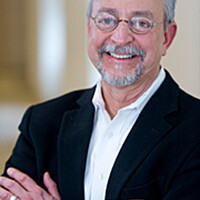Public schools, private beliefs
Loading...
P
erception and reality are from different planets. Depending on the commentators you listen to or the news sources you read, for instance, you might believe that religion has been hounded out of American public schools. Alternatively, you might think that the only way people talk about religious differences is with aggressiveness, defensiveness, and misunderstanding.
The reality may surprise you. In her cover story, Lee Lawrence documents the many ways that religion, faith, and prayer are present in the public school systems. In the half century since the Supreme Court banned school prayer, Americans have traveled a path from believing there should be virtually no religious expression in schools to a place where the study of religion is increasingly accepted as part of a student’s normal acquisition of knowledge – and where prayer, discussion of faith, and religious training are as much an option in extracurricular activities as are the science club, pep squad, and 4-H.
In class, students are exploring the varieties of religious experience, the history of religion, and the need to understand other faiths in a diverse society and global economy. Kids do not, however, pray together during class – although nothing has ever prevented an individual from praying on his or her own, as long as it is not required or encouraged by teachers.
Separation of church and state remains a pillar of American life, clearly articulated in the First Amendment to the Constitution. But while the state must not back any particular faith – or even faith itself – it also must not restrict expressions of faith. The First Amendment says Congress “shall make no law respecting an establishment of religion,” and goes on to say there shall be no law “prohibiting the free exercise thereof.”
That two-part principle was fought for more than a century before the Constitution was written. In 1657, a group of non-Quakers in New Amsterdam stood up for the rights of Quakers at a time when the colony’s governor, Peter Stuyvesant, was trying to stamp out any religion other than the Dutch Reformed Church.
In what is known as the Flushing Remonstrance (Flushing is a neighborhood of what is now Queens), the colonists argued that just as Holland allowed religious freedom to “Jews, Turks, and Egyptians,” New Amsterdam should do so for “Presbyterian, Independent, Baptist, or Quaker.”
The governor promptly jailed four of the signers and forced them to recant. More colonists stood up for freedom to worship; more arrests followed. By 1663, the Dutch West India Company had had enough, telling Stuyvesant to stand down because “The consciences of men at least ought ever to remain free and unshackled.”
The freedom that took root in New Amsterdam was that belief should not be imposed and believing should not be stifled. This is tricky, especially in the schools. Within a classroom, a teacher could cross the line and become a religious advocate. Peer pressure can try to force conformity. The way one looks and dresses, what one consumes, how observant a person is – these can easily cause misunderstanding, especially among the young.
Careful education about religion is important in a world where all types of believers and nonbelievers coexist. Freedom from imposed belief and freedom to believe dwell on the same planet – a planet where consciences must ever remain free and unshackled.
John Yemma is editor of the Monitor. He can be reached at editor@csmonitor.com.








